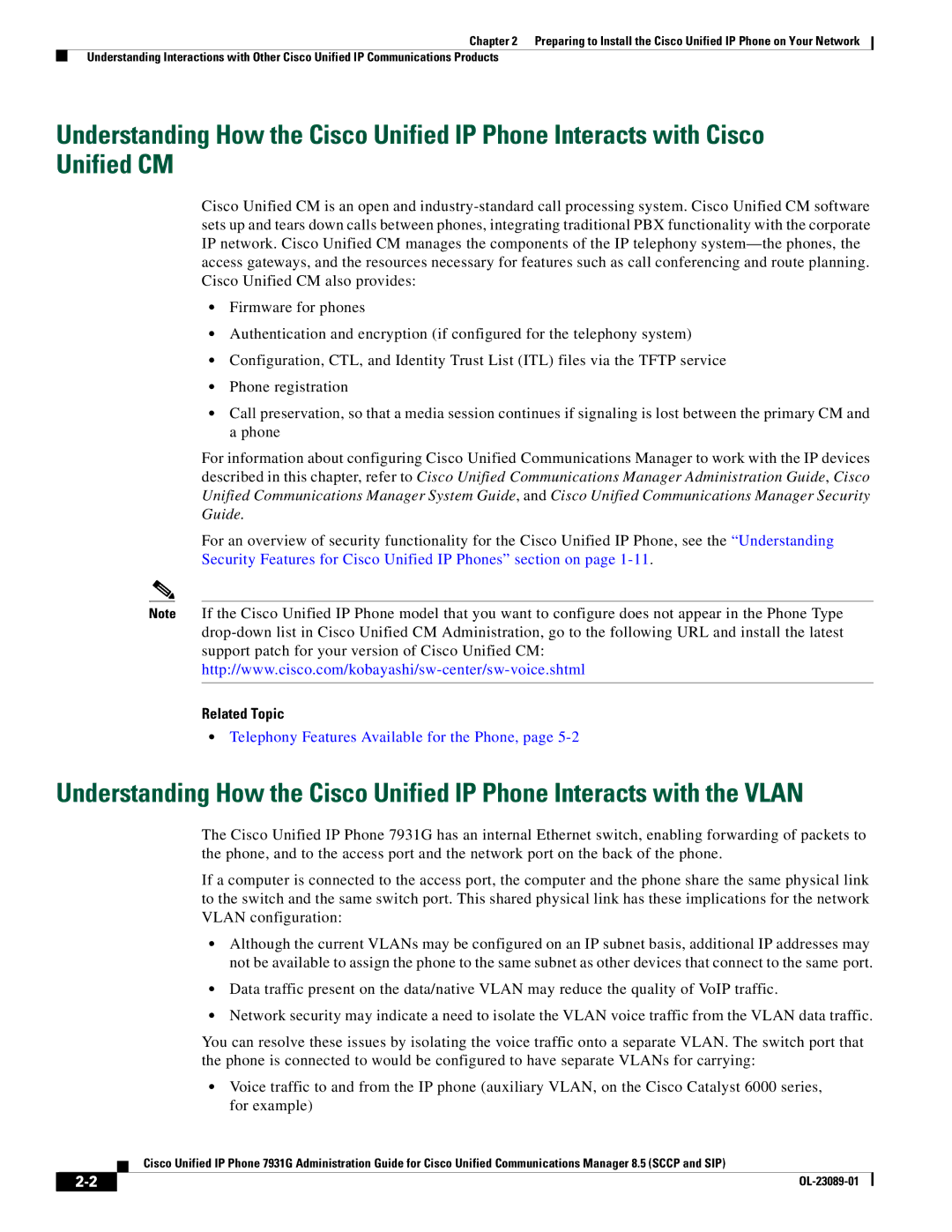
Chapter 2 Preparing to Install the Cisco Unified IP Phone on Your Network
Understanding Interactions with Other Cisco Unified IP Communications Products
Understanding How the Cisco Unified IP Phone Interacts with Cisco Unified CM
Cisco Unified CM is an open and
•Firmware for phones
•Authentication and encryption (if configured for the telephony system)
•Configuration, CTL, and Identity Trust List (ITL) files via the TFTP service
•Phone registration
•Call preservation, so that a media session continues if signaling is lost between the primary CM and a phone
For information about configuring Cisco Unified Communications Manager to work with the IP devices described in this chapter, refer to Cisco Unified Communications Manager Administration Guide, Cisco Unified Communications Manager System Guide, and Cisco Unified Communications Manager Security Guide.
For an overview of security functionality for the Cisco Unified IP Phone, see the “Understanding Security Features for Cisco Unified IP Phones” section on page
Note If the Cisco Unified IP Phone model that you want to configure does not appear in the Phone Type
Related Topic
•Telephony Features Available for the Phone, page 5-2
Understanding How the Cisco Unified IP Phone Interacts with the VLAN
The Cisco Unified IP Phone 7931G has an internal Ethernet switch, enabling forwarding of packets to the phone, and to the access port and the network port on the back of the phone.
If a computer is connected to the access port, the computer and the phone share the same physical link to the switch and the same switch port. This shared physical link has these implications for the network VLAN configuration:
•Although the current VLANs may be configured on an IP subnet basis, additional IP addresses may not be available to assign the phone to the same subnet as other devices that connect to the same port.
•Data traffic present on the data/native VLAN may reduce the quality of VoIP traffic.
•Network security may indicate a need to isolate the VLAN voice traffic from the VLAN data traffic.
You can resolve these issues by isolating the voice traffic onto a separate VLAN. The switch port that the phone is connected to would be configured to have separate VLANs for carrying:
•Voice traffic to and from the IP phone (auxiliary VLAN, on the Cisco Catalyst 6000 series, for example)
Cisco Unified IP Phone 7931G Administration Guide for Cisco Unified Communications Manager 8.5 (SCCP and SIP)
| ||
|
